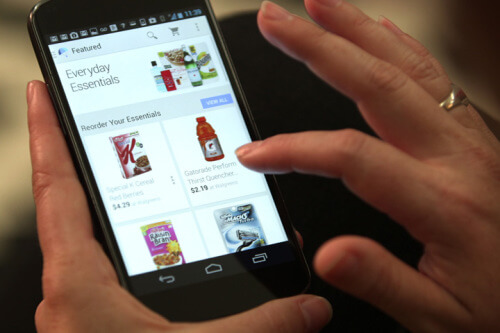My college-age daughter is home. With orders to shelter in place, she lost her campus job and her restaurant job, and few opportunities were available when she arrived back in town. So she gamely decided to be an Instacart shopper.
I found this amusing because she’s never shown much interest in food—has, in fact, elevated picky eating to an art form—and never once offered to shop for our family groceries. And it wasn’t long before the first call came in.
DAUGHTER: Mom, is tarragon the same as oregano?
MOM: No, why would you think that?
DAUGHTER: I know sometimes things go by different names, like coriander and cilantro. (She knew that, wow!)
DAUGHTER: (Twenty minutes later) Mom, what is a shallot and how big should it be?
DAUGHTER: (Ten minutes later) Mom, where would I find chives?
So, I’ll admit I had a few laughs at her expense. Maybe more than a few. By her second trip, she didn’t call me at all. I was impressed. She did a few orders each day and was starting to earn some money.
I wondered if I should give it a try. After all, I worked as a culinary professional for a decade, so I know my produce. I fed myself and my family for several decades and, above all, I love to shop. I know all the local stores, and I can work a grocery run into my schedule. It could really help someone who wasn’t leaving home. I signed up to be a shopper.
A prospective shopper answers basic questions and consents to a background check. You need to have a clean driving record and no arrests. You agree to the hygiene rules: always wear a mask, sanitize hands before shopping and wipe down the cart handle. To deliver prescription medications along with a grocery order, you need to pass a HIPAA test to show you understand patient privacy rights, as well as agree to Instacart protocols for leaving prescription meds with an adult.
There is also a food-safety lesson that tests the shopper’s knowledge about keeping hot foods hot and cooked foods at a safe temperature. Instacart asked me to submit a photo of the cooler I’d use to transport temperature-sensitive foods, and, when it was accepted, I was good to start shopping.
With my first order queued up in the app, I swiped on my phone to start shopping. First items are customers’ priority items; I was sent to frozen foods. Nope, that had to wait. No one would start there, would they? OK then, paper towels. Not a big selection, so I grabbed one and scanned it. Wrong item, try again. Wrong item. Click: can’t find item requested, find substitute. Done.
The next few items had me zigzagging all over the store. Fortunately, the app supplies the aisle numbers with the items. My inexperienced daughter was able to make good choices because there’s a photo of the item requested; when the bar code is scanned, the app tells you right away if there’s something wrong with your choice. For example, if a customer requested low-fat hot dogs and you scanned all-beef hot dogs, it lets you know. If a substitute is necessary, the app will text the customer with the available substitute, so the client can approve or cancel the item.
I quickly learned that keeping six feet between myself and the next shopper slowed me down. Ditto with the required weighing of each produce item. Then there are quirks: for instance, customers may ask for six pieces of fish but then reject them because they wanted less than two pounds.
On my maiden mission, the customer texted to tell me not to drop off the order for another hour or else to cancel it. I was an hour-plus into my trip with a cart full of carefully weighed meats and produce. What was I to do? Leave the cart? I opted to wait him out and killed time listening to my audiobook.
But first I called my daughter for advice on whether I should comply or stay the course. I also had to ask her to bring a phone charger because running the app ate up my phone battery.
My second mission was also rocky. Again, I called my daughter. (Who’s laughing now, Mom?) My customer wanted to add items to the list and I didn’t know how. Also, my Instacart payment wasn’t going through at checkout. The groceries are paid through the app and my phone wasn’t connecting the way it was supposed to. I panicked, looking at the people who were in line behind me, glaring. Finally, something clicked and I was able to get out of there to deliver the groceries. Only I forgot to take a photo of the groceries on the bench where I left them. Maybe I’m not cut out for this after all?
When you’re at the store next time, look around for the professional shoppers. Some wear Instacart shirts or lanyards. They’ll be glued to their phones and scanning cans and bottles. Don’t engage; they are on the clock. It’s better for them if they finish quickly and move on to their next order. If you use a shopping service, keep my experience in mind when you tip. It’s not as easy as it looks!

Pepper Evans works as an independent-living consultant, helping older adults age in place. She is the empty-nest mother of two adult daughters and has extensive personal and professional experience as a caregiver. She has worked as a researcher and editor for authors and filmmakers. She also puts her time and resources to use in the nonprofit sector and serves on the Board of Education in Lawrence Township, NJ.



